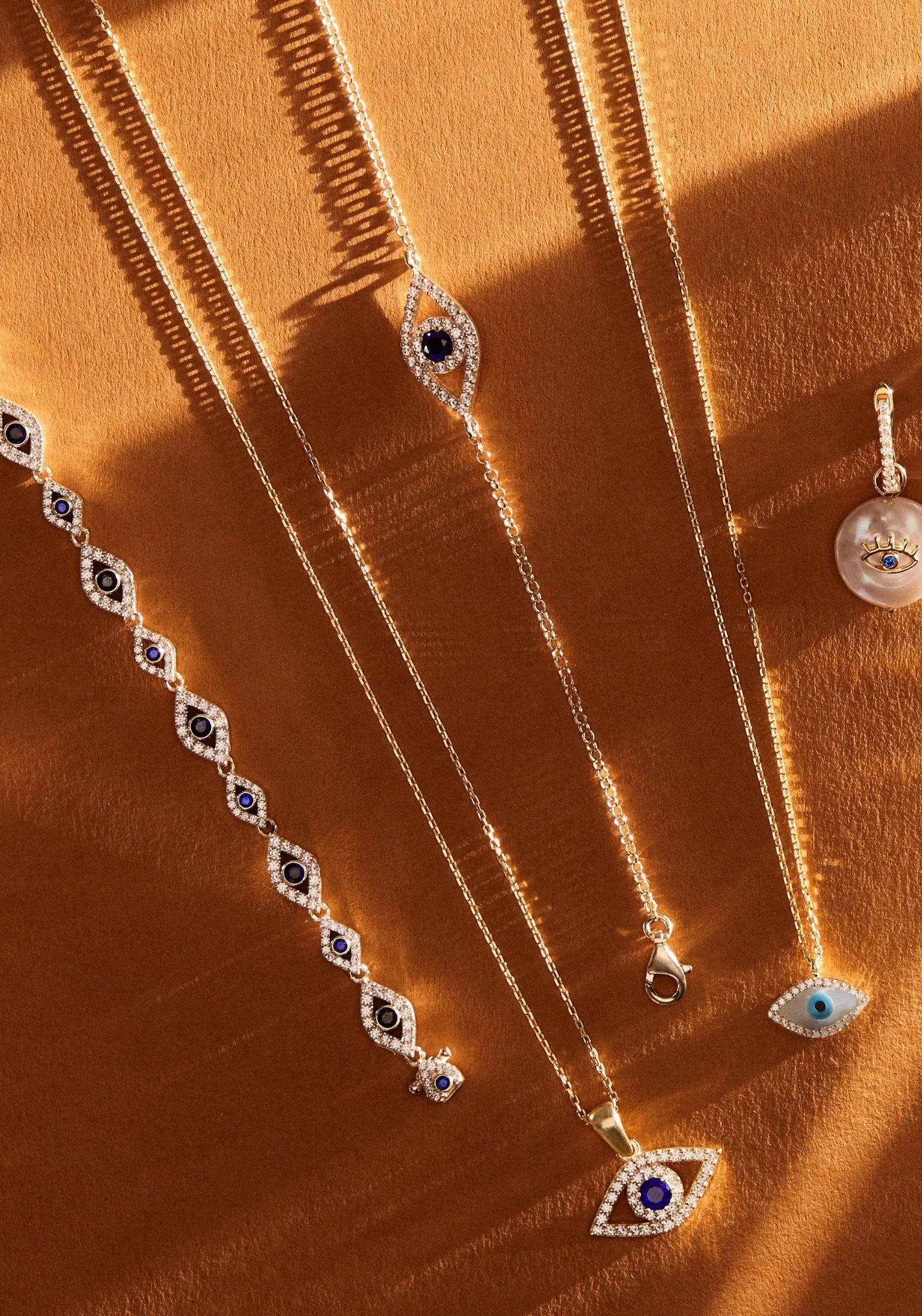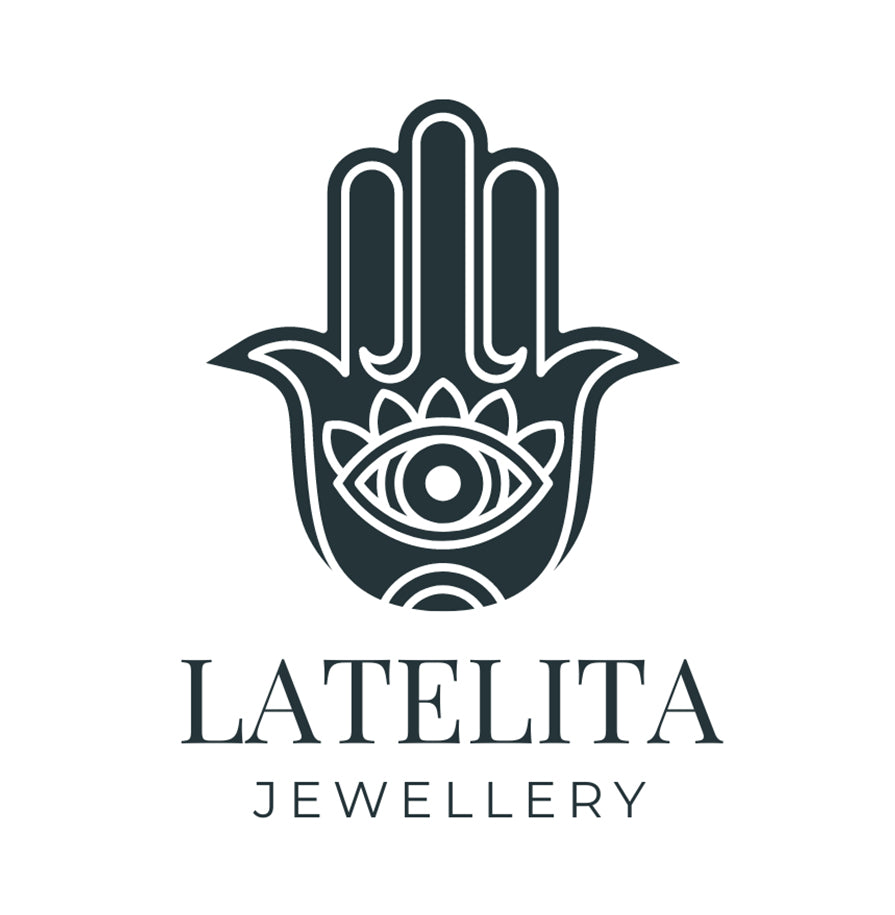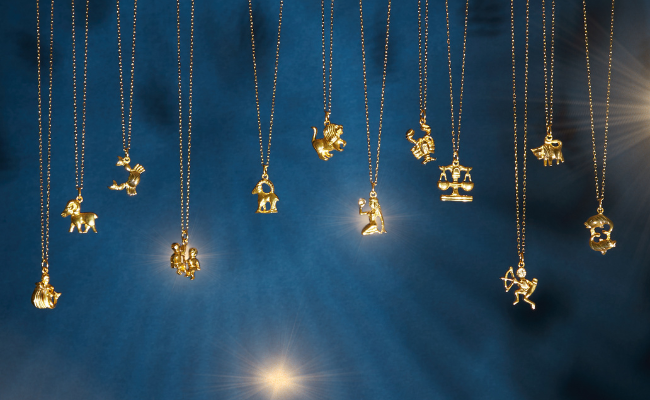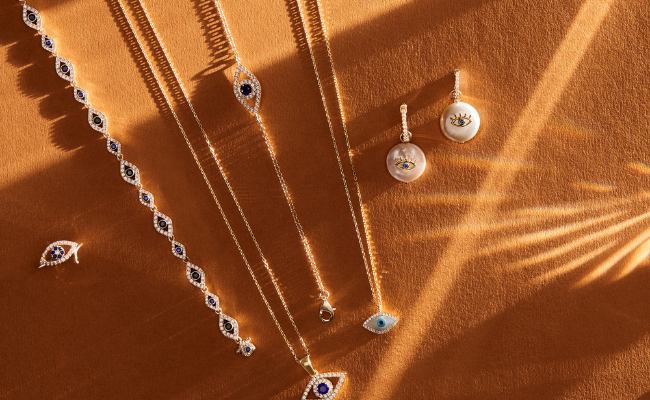
Is the Evil Eye Greek or Turkish? Country Origins Explained
Is the Evil Eye Greek or Turkish? Country Origins Explained
Sparkling with mystique and steeped in legend, evil eye jewellery has captured imaginations from the souks of Istanbul to the shores of Santorini. This iconic blue-eyed charm is a staple of chic fashion and meaningful gifting – but one question often arises: is the evil eye Greek or Turkish in origin? In this fun yet luxurious guide, we’ll explore the cultural origins of the evil eye symbol, how it became a beloved motif in evil eye bracelets, necklaces and more, and why it remains a stylish talisman today. Let’s dive in, one question at a time!

What Exactly Is the Evil Eye?
The “evil eye” isn’t just a piece of jewellery – it’s a centuries-old belief and symbol found in many cultures. At its core, the evil eye is the idea that a malevolent glare or envy-charged look can curse or bring bad luck to the person receiving it. To protect against this jinx, people created amulets in the shape of a watchful eye. The concept dates back thousands of years: archaeologists have found eye amulets in ancient Mesopotamia, and references to the evil eye appear in Greek and Roman texts. Essentially, the evil eye charm acts like a spiritual shield, reflecting back any ill will. Over time, this protective amulet evolved into the fashionable evil eye jewellery we know today – from dainty pendants to beaded bracelets – allowing wearers to carry a bit of good luck and style wherever they go.
Where Did the Evil Eye Belief Originate?
With its presence in so many lands, pinning down the exact origin of the evil eye belief is tricky. The tradition likely arose independently in multiple ancient civilizations. Some historians trace the first evil eye amulets to ancient Mesopotamia (modern-day Iraq) around 5,000 years ago, where clay tablets mention warding off a cursed gaze. The concept then spread across the Mediterranean and Middle East. Ancient Greeks and Romans were deeply wary of the “evil eye” – classical authors like Hesiod and Plutarch wrote about it, and Romans even wore phallic charms or used hand gestures to fend it off (their own quirky approach!). Meanwhile, early Jewish, Islamic, and Hindu cultures also developed evil eye folklore. In short, the belief in a curse via envious eyes is a shared human superstition that popped up in many places. By the time we reach the Ottoman era, the evil eye symbol (especially the blue-glass amulet form) was already popular in what is now Turkey and Greece. Rather than having a single birthplace, the evil eye legend grew from a mosaic of cultures over millennia.

Is the Evil Eye Originally Greek or Turkish?
Considering its ancient, far-flung roots, is it fair to call the evil eye either Greek or Turkish? The truth is, both cultures are huge contributors to the evil eye’s fame, yet neither can claim exclusive ownership. Greek and Turkish traditions have each embraced and shaped the evil eye belief for centuries. In Greece, the evil eye (known as “mati”, meaning “eye”) has been a household concept since antiquity – any Greek yiayia (grandmother) will warn you about a jealous glare causing headaches or bad luck! Turkey, on the other hand, became famed for its blue glass nazar beads, churning out countless eye charms in bazaars and workshops, especially during the Ottoman period. These amulets became so ubiquitous that many people today refer to the blue charm simply as the “Turkish eye.”
Importantly, Greek and Turkish people historically lived side by side across the Eastern Mediterranean (think of the Ottoman Empire, where cultures mixed), so the evil eye customs intertwined. You’ll find very similar beliefs and even identical blue-eye trinkets in both Athens gift shops and Istanbul markets. In fact, Greeks and Turks often playfully debate who started it – but it’s more accurate to say the evil eye symbol transcends borders. It’s a bit like asking who invented bread! Both cultures (and many others) have baked this metaphorical loaf for ages. So, the evil eye isn’t exclusively Greek or Turkish – it’s both, and so much more. Each culture contributed to making the evil eye amulet the global icon it is today.
What Does the Evil Eye Mean in Greek Culture?
In Greek culture, belief in the evil eye runs deep. Nearly every Greek family has a story about “to mati” – perhaps an uncle who felt dizzy after a stranger’s envious compliment, only to be cured when a friend performed a secret prayer to remove the spell. The evil eye is called “kakó máti” (bad eye) or often just “mati”. Greeks traditionally fear that an envious look – even an unintentional one – can cause headaches, nausea, or a streak of bad luck. It’s common even today for a Greek to quietly mutter “ftou ftou” (spitting sound) or pin a little blue bead on a baby’s blanket to ward off evil stares after someone gushes over how cute the child is. Don’t be surprised if a Greek host adds “me skótoses me to mati!” (“you killed me with the evil eye!”) jokingly if they suddenly feel unwell at a gathering – half in jest, half serious.
To guard against this curse, Greeks turn to mati charms. Greek eye jewellery often features a striking eye motif, usually in hues of blue and white. You’ll see evil eye bracelet designs with tiny enamel eyes alternating with beads, or a evil eye necklace pendant in the shape of a solitary eyeball charm set in gold or sterling silver. Traditionally, some Greek mati charms were even filled with specific herbs or incense, harkening back to Byzantine times, though modern ones are usually solid glass or painted ceramic. Beyond jewellery, the mati symbol appears everywhere in Greece: keychains, wall hangings, even painted on fishing boats for protection at sea. For Greeks, an evil eye charm is both a cultural emblem and a practical talisman – it says “I’m protected, and proud of my heritage.” It’s no wonder that Greek eye jewellery has become a popular souvenir for UK travellers visiting Mykonos or Santorini, allowing them to take home a bit of Greek good fortune in a stylish form.
What Does the Evil Eye Mean in Turkish Culture?
Walk through any Turkish bazaar or step into a home in Turkey, and you’ll likely be greeted by the watchful gaze of a dozen blue eyes! In Turkey, the evil eye belief is known as “nazar”, and the typical amulet is called “nazar boncuğu” (literally “evil eye bead”). Turkish culture holds that jealous admiration or praise can unintentionally harm the subject of the compliment – a concept almost identical to the Greek one. To counteract this, Turks have their own clever customs. One famous tradition is saying “Maşallah” (an Arabic word meaning “God has willed it”) whenever praising a baby, a new car, or someone’s good health. It’s a verbal way to ward off envy by crediting God, thereby hopefully nullifying any evil eye. But the most visible Turkish solution is the legion of blue eye amulets everywhere.
Turkish eye jewellery and charms are typically made of handmade glass, featuring concentric circles of dark blue, white, and light blue (with a black dot at center to resemble a wide-open eye). These glass evil eye beads have been crafted in Anatolia for many generations – you can even visit workshops in Turkey where artisans blow and shape the molten glass into the classic eye design. Turks proudly hang large nazar discs in their homes and offices, dangle keychain versions from car mirrors, and yes, wear them as jewellery too. An evil eye bracelet with Turkish nazar beads or a pendant with a single bold blue eye is thought to protect the wearer from misfortune by “staring back” at any ill-wisher. In Turkey, gifting a nazar charm to someone moving into a new house or starting a new business is common, to safeguard their fresh start. With its vibrant cobalt hue and folk charm, Turkish evil eye jewellery carries a rustic, authentic vibe – one that UK visitors often fall in love with. It’s easy to see why Turkish eye jewellery has become synonymous with the evil eye symbol worldwide.
Many market stalls in Turkey (and Greece) are filled with vibrant blue evil eye amulets like these. The Turkish eye jewellery tradition has popularised the classic cobalt-blue glass charm, which has since been adopted in Greek marketplaces and around the world. Each glass bead is crafted to resemble a watchful eye, believed to stare back at misfortune. Whether hung in homes or worn as jewellery, these charms are an ever-present reminder of the shared cultural heritage behind the evil eye symbol.

Why Do People Wear Evil Eye Jewellery Today?
Beyond its fascinating folklore, the evil eye symbol has exploded in popularity as a fashion trend – and not just in Greece or Turkey. In the UK and Western world, wearing evil eye jewellery has become in vogue, blending style with spiritual meaning. But why are modern people so drawn to these mystical eyes? For one, the evil eye carries a universally positive vibe: protection from bad energy. Even if someone isn’t deeply superstitious, it’s comforting (and empowering) to wear a beautiful piece of jewellery that symbolises looking out for you. It doesn’t hurt that these eye designs are undeniably eye-catching (no pun intended!) and versatile in fashion.
Celebrities and influencers have been spotted accessorising with evil eye pieces, giving this age-old talisman a glamorous twist. From delicate gold evil eye necklace pendants worn by Hollywood A-listers, to bold beaded evil eye bracelets stacked on the wrists of pop stars, the symbol has been embraced as a chic motif. High-end jewellers now create luxury evil eye jewellery adorned with diamonds, sapphires, and enamel, elevating the humble charm into red-carpet-worthy bling. The beauty of evil eye jewellery is that it marries timeless meaning with modern style – you get the boho-spiritual vibe alongside a trendy accessory. In the UK, you can find evil eye designs in everything from fine jewellery boutiques to high street fashion stores. Pair a simple gold evil eye pendant with your little black dress for a touch of exotic elegance, or throw on a colourful evil eye bead bracelet with your casual weekend outfit as a fun talking point. Whether one genuinely believes in its protective power or just loves the look, wearing the evil eye is a way to carry a bit of positivity and cultural history with you, all while looking effortlessly stylish.
Modern evil eye necklace designs, like this elegant pendant, have turned an ancient amulet into a contemporary fashion statement. Set in precious metal and often accented with crystals or gemstones, these pieces demonstrate the luxurious side of evil eye jewellery. They’re subtle enough for everyday wear yet distinctive enough to spark conversations. By donning an evil eye necklace or charm bracelet, style-conscious individuals in the UK and beyond are embracing a trend that is equal parts glamour and good vibes.
Are Evil Eye Jewellery Gifts a Good Idea?
If you’re hunting for a meaningful gift with a bit of cultural flair, evil eye jewellery gifts are a fantastic choice. Why? First off, they carry a heartfelt message: protection and well-wishes for the wearer. Gifting someone an evil eye bracelet or necklace is like saying, “I care about you and want you to be safe from harm (and stylish while you’re at it!).” In Greek and Turkish tradition, these charms are common gifts for significant life events. New baby in the family? A little evil eye pin or baby bracelet is a popular gift to ward off any negative stares the newborn might attract. A friend bought a new car or house? A hanging evil eye ornament is a customary housewarming token in Turkey. This cultural practice translates perfectly into modern gift-giving – an evil eye piece is appropriate for nearly any occasion, be it birthdays, anniversaries, or graduations, because it’s essentially a good luck charm wrapped in a beautiful design.
From a fashion standpoint, evil eye jewellery is generally unisex and suits all ages, so you don’t have to worry if it fits someone’s style. There are subtle designs for those who prefer minimalist elegance (think a tiny sapphire-and-diamond evil eye pendant on a delicate chain) and playful, bold designs for the boho-chic friend (imagine a bright bracelet with multiple dangling evil eye beads). Moreover, because the symbol is recognisable and steeped in story, it often comes with a built-in conversation starter. The recipient of your gift won’t just wear a lovely accessory – they’ll likely get to tell the tale behind it when someone compliments it. Especially in the UK where the evil eye is trendy but still seen as a bit exotic, a gift like this feels unique. In essence, giving an evil eye jewellery gift is a way to share a piece of culture, convey well-wishes, and elevate your loved one’s jewellery collection with a touch of mystical charm.
Greek vs Turkish Evil Eye Jewellery – Is There a Difference?
You might be wondering if Greek eye jewellery differs from Turkish eye jewellery in any real way, given both feature the famous evil eye. In terms of meaning and usage, they’re virtually the same – both are worn for protection and as a nod to cultural roots. However, there are some subtle differences in style and emphasis that have emerged. Turkish evil eye jewellery tends to stick to the classic design: the traditional nazar bead of deep blue with white and azure circles. Think of the souvenirs you find in Istanbul’s Grand Bazaar – bracelets with uniform blue glass beads, or pendants featuring a large flat glass eye. The focus is often on that vivid blue color (some say it’s because blue was thought to ward off evil, and historically, Turks believed blue-eyed people were more likely to give the evil eye, hence a blue eye fights back!). Turkish jewellers often incorporate the glass beads in folk-style accessories, using rope, cord or simple metal findings to string them, keeping a charming, rustic look. It’s not uncommon to see Turkish evil eye pieces combined with other symbols of luck, like small horseshoes or four-leaf clovers, as multi-charm bracelets.
Greek evil eye jewellery, while it frequently uses the same blue eye motif (since Greece too fell in love with the nazar design long ago), can sometimes take a more varied or modern artistic approach. Greek designers might stylise the eye symbol a bit more – you’ll find mati charms in different colors (light blue, turquoise, even pink) and materials. For instance, a trendy piece of Greek jewellery might be a sleek rose-gold chain featuring a flat disc charm with an evil eye enameled in white and sky-blue, perhaps accented by a tiny cross or a mati alongside other Greek lucky symbols like a little turquoise bead. Essentially, Greek versions can be a touch more delicate or fashion-forward in design, blending the evil eye with contemporary jewellery trends (after all, Greece has a strong jewellery artisan tradition, especially in Athens). That said, the overlap is huge – a tourist browsing shops in Athens or on a Greek island will find plenty of products identical to the Turkish ones, and vice versa. In fact, the same manufacturer might be supplying both countries!
For a UK shopper or any fan of the evil eye trend, the distinction isn’t critical – Greek or Turkish, you’re getting a piece of the same history. If we must split hairs: think of Turkish eye jewellery as the classic original blueprint, and Greek eye jewellery as the local remix. Both are beautiful, meaningful, and will look fabulous with your outfit. Whether you call it a Turkish nazar or a Greek mati, the evil eye charm serves as a stylish conversation piece that bridges cultures.

So, Is the Evil Eye Greek or Turkish? (The Verdict)
After our journey through history and culture, you’ve probably gathered that the evil eye’s origin isn’t a simple this-or-that answer. Both Greek and Turkish cultures have embraced the evil eye symbol so strongly that each considers it an integral part of their heritage. Rather than belonging to one country, the evil eye is a shared treasure of the Mediterranean world – a symbol of protection that hopped from one culture to another over the centuries, picking up new styles and stories along the way. The Greeks with their mati and the Turks with their nazar have more in common than not when it comes to this little charm. In fact, the very phrase “evil eye” in local languages illustrates the crossover: Greeks sometimes refer to the bead as a “Greek eye”, while Turks call it a “Turkish eye,” and both terms have entered English usage. (Fun fact: One reason the bead is usually blue is that in both Greek and Turkish folklore, people with blue or green eyes – a rarity historically in those regions – were thought most likely to cast the evil eye, so a blue eye amulet was deemed the best defense!).
Ultimately, asking whether the evil eye is Greek or Turkish is like asking whether the sun rises in the East or the West – it’s seen in both skies. The evil eye belongs to everyone who believes in its protective power or simply admires its beauty. From ancient superstitions to modern evil eye jewellery trends in the UK and beyond, this enduring emblem proves that good ideas travel well. So the next time you slide on your favorite evil eye bracelet or admire that glossy blue pendant around your neck, remember: you’re wearing a piece of history shared by many cultures. Greek or Turkish, it doesn’t really matter – what matters is the positive energy and style it brings into your life. And in a world full of fleeting trends, the evil eye’s lasting allure is something we can all appreciate. After all, protection and glamour make one divine combination, don’t you think?













